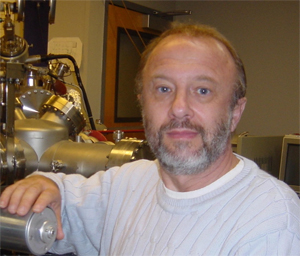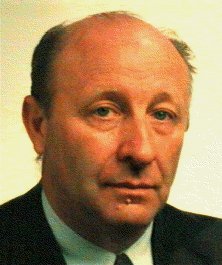U.S. and Belgian Physicists Share Award for International Collaborative Research
San Diego, CA, October 9, 2007 -- For more than 25 years and across the 9,000 miles separating their home institutions, University of California , San Diego physicist Ivan Schuller has worked closely with Belgian physicist Yvan Bruynseraede on more than 75 joint papers.
|
For their enduring partnership and contributions to understanding nanostructures, the scientists from UC San Diego and Belgium’s Catholic University of Leuven are now the recipients of the 2007 Sômiya Award for International Collaboration in Materials Research.
The award will be presented this week at the 10th International Conference on Advanced Materials of the International Union of Materials Research Societies (IUMRS), October 8-13, in Bangalore , India .
"Our partnership has been a worldwide collaboration that links the West Coast of North America and Belgium , but in addition we have long-term collaborations with researchers in South America, as well as others in Germany , Spain , France and many other places,” said Schuller. “This award underlines the importance of international collaboration in modern science, and hopefully will encourage funding agencies to continue their support for research that transcends national boundaries.”
|
Schuller recalls that he first began interacting with Bruynseraede after the Belgian researcher contacted him about a 1980 article on artificial superlattices – new materials made out of alternating layers of different materials at the atomic level. “We started wondering about what happens to the magnetic, superconducting, or elastic properties of different materials in this new structure,” said Schuller.
The two investigators published their first joint paper in 1986, and the prolific partnership has yielded an impressive body of work in the field, including pioneering studies of the giant magneto-resistance (GMR) effect. Schuller and Bruynseraede also developed an open-source, downloadable software tool, SuPReX, now widely used by scientists for quantitatively refining the structures of superlattices. “It was a real collaboration between our two groups,” noted Schuller.
Selection criteria for the Sômiya Award include the development of collaborative programs with a major impact on technology or society, and high-quality research publications. Among their significant findings, added Schuller, is that “even a small structural change can produce enormous changes in the physical properties such as occurring in the Magnetoresistance of magnetic superlattices.”
In pre-taping his remarks to the conference, Schuller noted that a great benefit of his collaboration with Bruynseraede has been the influence on students. “We had a lot of effect on the graduate students and postdocs who worked with us, who have ended up going all over the world,” said Schuller. “They are now creating new international collaborations in materials research—precisely what this award encourages.”
The Sômiya Award is named in honor of Shigeyuki Sômiya, Emeritus Professor of Tokyo Institute of Technology and, later, Dean of the Tokyo University of Science and Engineering. Sômiya is a winner of the Materials Research Society Medal, and the Japanese Scientific Academic Award.
Schuller has been a professor of physics at UCSD since 1987. Previously, he was a senior physicist and group leader at Argonne National Laboratory from 1978-’87. He earned his Ph.D. from Northwestern University in 1976. He is an academic participant in the California Institute for Telecommunications and Information Technology (Calit2) at UCSD, and a founder of its Nano3 cleanroom and nanofabrication facility. He received the Materials Research Society Medal and the American Physical Society’s Wheatley Prize (1999) and David Adler Lectureship Award (2003). The following year, Schuller earned the E.O. Lawrence Award, received a Doctor Honoris Causa from Universidad Complutense Madrid , Spain , Spain . He was appointed to the Royal Spanish Academy of Sciences, the Royal Flemish Academy of Sciences and the Chilean Academy of Science.
Related Links
UCSD Schuller Nanoscience Group http://ischuller.ucsd.edu/index.php
Katholieke Universiteit Leuven Solid State Physics and Magnetism http://fys.kuleuven.be/vsm/
Calit2 Nano3 Facility http://nano3.calit2.net
Media Contacts
Media Contact: Doug Ramsey, 858-822-5825, dramsey@ucsd.edu


